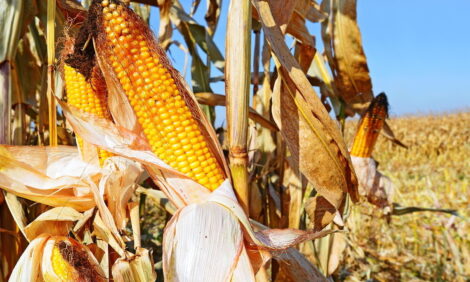



Modification of Beef Quality through Steer Age at Slaughter, Breed Cross and Growth Promotants
To improve beef tenderness, producers should use British crossbreds, slaughter the animals at 12 to 13 months of age and not use hormonal implants, recommend Canadian researchers following a study looking at factors affecting beef quality from steers.In Canadian Journal of Animal Science, I. Girard of the University of Alberta and co-authors there and at Agriculture and Agri-Food Canada and Alberta Agriculture and Rural Development have published the results of a 2×3 factorial experiment to investigate the interactions of slaughter age (12–13 or 18–20 months), growth implants use (Component E-S, TE-S), ractopamine hydrochloride (RAC) feed supplementation use and breed cross [Hereford–Aberdeen Angus (HAA) or Charolais–Red Angus (CRA)] on meat quality. They measured the following meat parameters: pH, temperature, objective colour measurements, relative myoglobin states, sarcomere lengths, shear force, and water losses of m. semitendinosus (ST) and m. gluteus medius (GM) from 112 crossbred steers.
In the ST, age affected objective colour measurements by increasing chroma and decreasing lightness (L*) and hue angle (P<0.05). Metmyoglobin (MMB) content of the ST also increased with steer age (P<0.05).
In the GM, yearling-fed steers had greater MMB content than calf-fed steers, while hue angle varied the opposite way (P<0.05). Other variations in meat colour and myoglobin contents were more complex in the GM than the ST as they involved three-way interactions between the different treatments.
Shear force and purge loss of the ST increased with implantation (P<0.05) with no change in sarcomere length (P>0.05). Shear force standard deviation was similar for breed crosses when yearling-fed but greatest for CRA breed cross when calf-fed (P<0.05).
In both muscles, purge loss (drip loss) was increased by RAC supplementation (P<0.05). RAC supplementation did not affect sarcomere length and shear force in both muscles (P>0.10). In the GM, shear force increased with age and with CRA genetics (P<0.05).
From their results, Giraud and co-authors concluded that producers seeking to reduce beef toughness should consider using British crossbreds, exclude the use of hormonal implants and slaughter steers at 12 to 13 months of age.
Reference
Girard I., J.L. Aalhus, J.A. Basarab, I.L. Larsen and H.L. Bruce. 2012. Modification of beef quality through steer age at slaughter, breed cross and growth promotants. Canadian Journal of Animal Science, 92(2):175-188. doi:10.4141/cjas2012-001
Further Reading
| - | You can view the full report (fee payable) by clicking here. |
June 2012


